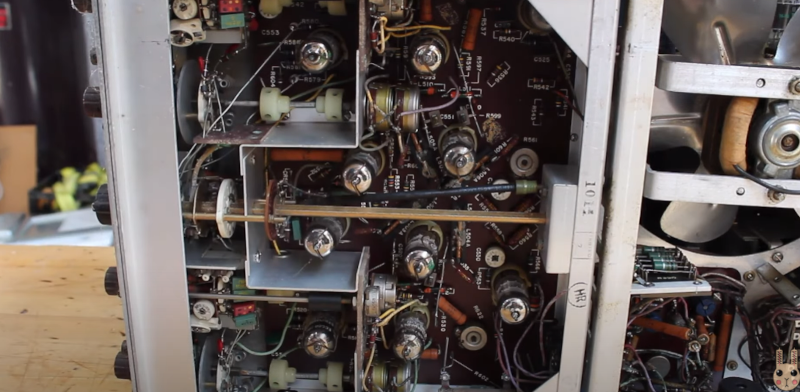These days, a pretty nice oscilloscope can fit in your toolbox and even a “big” instrument is probably something you can tuck under your arm. But that hasn’t always been the case. Consider this old HP 150A, restored by [USagi Electric]. (Video, embedded below.)
The 10 MHz dual channel scope might not seem very high-tech today, but when HP rolled it out in the 1950s to challenge Tektronix, it was quite respectable. The $1,000 price tag just for the mainframe was pretty respectable, too. Unfortunately, the scope wasn’t very reliable with more than 50 tubes in it, and HP quickly had to develop new entries in the scope market.
On the other hand, the machine was great to work on since all the boards were mounted so they would swing out for access. The case is a beast and the whole thing weighs in at about 80 pounds.
[Usagi] thought the scope would only need cleaning but — spoiler alert — it needed more than that. The cleaning and painting job was impressive, and there’s also a custom PCB milled out for the electrolytic capacitors.
There’s more to the story. A tube substitution turned out not to be such a good idea. And the power supply problems were probably due to the fact the scope was set for 230V input.
By the end of the video — which in all fairness is part one — the scope isn’t quite working. But you do get to look at the beautiful insides and it does have some trace in some modes. We’re looking forward to part two.
Really interesting to compare the teardown of an old scope like this compared to a modern one. Then again, $1,000 was a lot in the 1950s so maybe comparing it to a more modern instrument would be fairer.















I really enjoyed the first section of the HP 150A ‘scope restoration article. As a summer employee at Tektronix, I worked on a dual-trace mod to the Tek 515, having 15MHz BW. It appeared later, thanks to the introduction of the 6GM8, a frame-grid, low mu dual triode that could operate relatively well at low cathode-to-anode voltages.
I’m currently a restoration engineer at VintageTEK nuseum (www.vintagetek.org) and am looking forward to subsequent sections. I was also interested in the relationship between -hp- and Neely Enterprises during that period.
Readers might find this interesting:
https://www.hpmuseum.net/divisions.php?did=41
Cheers,
Philip Crosby, Restoration Engineer, VintageTEK Museum
Those old scopes are a lot of fun to work on, but due care should be taken because of the voltages involved, especially near the CRT.
HP made some of my favorite test equipment, and I once had a small collection of HP gear. It’s nice to see someone who appreciates classic test gear working to restore it.
More info on the HP memory project regarding the 150A is in:
https://www.hpmemoryproject.org/timeline/cort_van/hp150a_00.htm
Phil Crosby
About the circuit boards on the 150A – were they thru-hole plated, eyeletted or what. It looks like they were XXXP phenolic, which was popular at the time, but, thru-hole, not so much. Electroless Cu plating was in its infancy.
PhilC
though hole means compoent to pcb contact style, plated is debated but it wasnt uncommon to see riveted holes and some dual sided printed circuits in its era. We are only 10 years after single sided PCB’s were common in high spec gear and only 3-5 years away from surface mount. Mind you not in your consumer radio so much, but industries that could afford to drop give or take 10 grand on a diagnostics tool (in today’s money)
I don’t care if he gets it working or not (hope he does get it perfectly working though) this thing is a piece of industrial era electronic are. (Just swing out the circuit boards and admire it).
There was a time when HP made excellent test equipment. Their ‘scopes were never in that category …
I have a 182A mainframe with two digitizer modules that’s been running fine since new in 1971… I no longer use it daily or even weekly, but it has been reliable when I do need it.